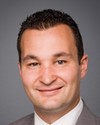Thank you very much for your presentation.
One of the questions I have is what the improvements are that you have planned for the collection of this data.
Evidence of meeting #4 for Indigenous and Northern Affairs in the 39th Parliament, 1st Session. (The original version is on Parliament’s site, as are the minutes.) The winning word was data.
May 10th, 2006 / 5:05 p.m.
Conservative

Brian Storseth Conservative Westlock—St. Paul, AB
Thank you very much for your presentation.
One of the questions I have is what the improvements are that you have planned for the collection of this data.
5:05 p.m.
A/Director, Strategic Research and Analysis Directorate, Department of Indian Affairs and Northern Development
We're data geeks. We use data; we don't collect it. For that we depend largely on Statistics Canada, because in a nutshell, the census is the name of the game when it comes to aboriginal data. There's also the aboriginal peoples survey. I know there are efforts right now, in terms of finding the right support for that exercise. It's a post-census survey. There was one in 1991, one in 2001, and there are attempts to have one in 2006, this fall.
I think it's important also to start looking at the vital statistics I was referring to earlier, because as soon as you add an aboriginal identifier the possibilities in terms of research on the health sides explode. The data is there for everybody; it's just that we can't identify who's who. So you could look at causes of death, suicide, hospitalization, cancer, diabetes, low birth weight, high birth weight--you name it. It could all be done through that first attempt, because then it will trickle down through the health information system.
But that's not us. We can only encourage, as researchers, and show the value, which we do.
5:10 p.m.
Bloc

Marc Lemay Bloc Abitibi—Témiscamingue, QC
Is there any way to find out who has registered as a registered Indian, as a Métis, or as a non-registered Indian? Is it possible to verify whether what people say is actually the truth?
I'm asking the question because I feel your data is very important for the future development of the department.
5:10 p.m.
A/Director, Strategic Research and Analysis Directorate, Department of Indian Affairs and Northern Development
Once again, it is a matter of quality as opposed to a demographic explosion. Could the issue of quality not explain the demographic explosion in part?
Regarding variations in the non-participation of some communities, I took this factor into consideration while evaluating the impact of ethnic mobility. Also at issue was what we demographers refer to as undercount. It is inevitable that certain segments of the population would not be included in the census. For the overall population, this undercount hovers between two and three per cent. I took all of these factors into account while estimating the effect of ethnic mobility.
The value or validity of a declaration cannot be measured. I would find this fact very perplexing if it occurred in Canada alone. However, as I was saying earlier, for the same periods, the same phenomenon has been observed in the U.S., Australia, and New Zealand, to a lesser degree. Ethnic minorities are also undercounted in China and the former Soviet Union. This phenomenon is widespread.
Earlier, I identified three demographic factors that are predeterminant, including social and legal onces. For example, China has a one child per family policy. Families belonging to the ethnic majority in China can only have one child. Very small minorities can have two or three children. In the past, people tended to identify themselves as members of the majority, because this gave them access to certain jobs. The same people are now saying that they should perhaps go back and declare themselves as members of their minority group, something they didn't do before. In other words, they are coming out of the closet because this gives them the right to have two children.
In the former Soviet Union, passports were identified as the probable source of these variations. Here, past events like Oka have drawn a lot of attention. In fact, when we count the number of times the words “aboriginal”, “first nation”, “Métis” or “Inuit” appeared in newspapers over the years, the highest numbers correspond to peaks in growth rates during the 1990s. There are also factors that are legal, or political in nature, such as the introduction of Bill C-31.
I do not exclude opportunism as a motivating factor for some people who make declarations. However, as this occurs among aboriginal minorities in other countries around the world, I believe that this phenomenon is indeed present and very real.
5:10 p.m.
Bloc

Marc Lemay Bloc Abitibi—Témiscamingue, QC
All right.
According to what you carefully explained to us on the last slide concerning housing, can I go so far as to assume that Inuit and aboriginal housing is part and parcel of the problem, but also of the solution, so that quality of life can be improved? Overcrowded housing is the cause of all types of tensions.
5:15 p.m.
A/Director, Strategic Research and Analysis Directorate, Department of Indian Affairs and Northern Development
If the indicators are improved then the result will improve and the gap will be smaller. What is missing here it how the various dimensions of wellbeing are connected.
5:15 p.m.
A/Director, Strategic Research and Analysis Directorate, Department of Indian Affairs and Northern Development
The higher my level of education, the better my chances of procuring employment. The better my job the higher my income. The higher my income, the more options I have in terms of housing.
5:15 p.m.
Bloc

Marc Lemay Bloc Abitibi—Témiscamingue, QC
Except if I live on a reserve where housing options are extremely limited.
5:15 p.m.
A/Director, Strategic Research and Analysis Directorate, Department of Indian Affairs and Northern Development
We're coming to the second part of our research project, that is the determinants. Why is well-being where it is? I don't want to guess. I am a researcher, so I am motivated by and obsessed with facts.
5:15 p.m.
NDP

Jean Crowder NDP Nanaimo—Cowichan, BC
Do you do a correlation then between health and housing, for example?
I know you talked about the determinants. For example, we know that with tuberculosis, overcrowding is a factor.
We have an incident right now with Garden Hill, where there is overcrowding and no running water in many of the houses.
So do you do any kind of correlation between inadequate housing and health?
5:15 p.m.
A/Director, Strategic Research and Analysis Directorate, Department of Indian Affairs and Northern Development
It could be part of it. We haven't done it thus far. As I said, we really were focused on actually producing this first index, this first measure, because it's the foundation of everything else, understanding the well-being of first nation, Inuit, and Métis communities.
We could do that type of analysis, but it has been done elsewhere: the relationship between the quality of housing and health, the quality of education and health, the quality of housing and education. If you have four kids in the same bedroom, it's kind of hard to study for your exam the next day. These research questions have been studied in the general population.
5:15 p.m.
NDP

Jean Crowder NDP Nanaimo—Cowichan, BC
That's in the general population, not first nations, Inuit, and Métis.
5:15 p.m.
A/Director, Strategic Research and Analysis Directorate, Department of Indian Affairs and Northern Development
No, but the relationship has been demonstrated.
From a research perspective, I always welcome new research ideas. It would be interesting. Would it add significantly more to our knowledge than actually focusing on other aspects such as distances from major centres, or proximity or interactions with neighbouring non-first nation communities? To me, it would be more valuable to invest in that type of research right now than to repeat for first nations similar research that was done for the general population--in this particular context, but not always. I'm not saying that's always the case.
5:15 p.m.
Conservative
5:15 p.m.
Conservative

Rod Bruinooge Conservative Winnipeg South, MB
On that note, are there any things or ideas you'd like to suggest to the committee in order to perhaps improve the way you're able to do your job in the future?
5:15 p.m.
A voice
More money.
5:15 p.m.
A/Director, Strategic Research and Analysis Directorate, Department of Indian Affairs and Northern Development
That's second. The first is more data.
5:15 p.m.
Conservative

Rod Bruinooge Conservative Winnipeg South, MB
What about the concept of you utilizing...I wouldn't say a random sample, but something similar to polling techniques? I know a lot of scientific analysis of random samples is done. Could that be useful at all to you in perhaps indicating certain trends in certain areas?
5:15 p.m.
A/Director, Strategic Research and Analysis Directorate, Department of Indian Affairs and Northern Development
Do you have anything in mind when you talk about sampling? Are you referring to sampling individuals or sampling communities?
5:15 p.m.
Conservative

Rod Bruinooge Conservative Winnipeg South, MB
I guess it would be a combination of both. I'm just thinking more in terms of polling. Being from the political persuasion like the rest of my colleagues, we have some understanding of polling. I know there is an element of scientific analysis done with regard to that. Could that be useful to you? Has that been considered?
5:15 p.m.
A/Director, Strategic Research and Analysis Directorate, Department of Indian Affairs and Northern Development
There is the northern poll that is being worked on right now in the department. We have a few questions in there that hopefully will help shed some light on how northern people define well-being.
Yes, we used the HDI methodology--which we've massaged a little bit, but it's still very close to the HDI methodology--but we did that in our ivory tower, with our own perception of what well-being is. Through this particular poll, we want to try to get an idea of, okay, this is what community well-being measures, but what is well-being for northern residents? What does it include? What does it not include?
That's informative. That's important, because that will give us direction in terms of the next stage for the research as to what the important elements are that need to be focused on.
On that particular idea of why we picked these indicators, it's because these are indicators that you'll find in most indices around the world. We've done some literature review on that. So the components of the CWB are cohorts of almost all the indicators. Even if they have 50 components, you'll find in there the ones we have.